Squat, a basic movement of all sports disciplines
The squat is the king exercise in bodybuilding, fitness, CrossFit, and even in powerlifting to develop the ischios and glutes. As a result, thousands of people practice it, both men and women, because of its many advantages. But then, how to do squats? How to build up the thighs? What is the right squat position to adopt? Focus on this type of very popular bodybuilding exercise.
Squat: What is it?
Very useful for all sports, it is a basic exercise to develop strength, volume and muscle building. It is very technical and requires a certain flexibility to perform. Here is the position to adopt to do the squat: standing with your feet shoulder-width apart and your knees turned outwards, look far ahead. Then, bend your legs by pushing your buttocks backwards as if you were going to sit on a chair and by slightly bending your back in front. Be careful, your back must be straight, your shoulders must be low and your heels must stay on the floor. At this moment, you will feel your thighs and buttocks working. Then, contract the abdominal muscles and the buttocks and push on the legs so that they can return to the initial position. As you do this, you should feel the gluteal muscles and thighs work.
The classical movement without material
This bodyweight strength exercise strengthens the legs, hips and buttocks. Ideal for beginners, it requires very little physical stamina and experience. When the movement is completed, it stops in a sitting position.
The classic barbell squat (or back squat)
It is the traditional squat that we all know with the bar posed on the trapezoids. When the exercise is carried out in a complete way (complete squat), that allows a more effective reinforcement of the buttocks and an excellent muscular development by the increase in the amplitude and the number of solicited muscles. When the movement is carried out in complete amplitude, one goes down almost to the ground. The buttocks must be as close to the ground as possible. Harder than the classic squat, it is also more effective.
This type of exercise is usually an integral part of your weight training program if you don't have back problems (herniated discs, pinches, etc.). Indeed it is the most performed by the body-building practitioners.
Which muscles are used
This type of exercise consists of a bending movement of the legs, combined with the pulling of weights. That said, it requires several muscle groupsDepending on your position, it also involves the hamstrings, adductors, knee joints, abdominals and lumbar vertebrae. Depending on your position, it also involves the hamstrings, adductors, knee joints, abdominal muscles and lumbar muscles.
Other types of squats
In addition to a classic workout in a gym, you can discover several programs that, from home, will help you get better results. Among the options, you have different types of exercises that allow you to strengthen and build muscle in the buttocks, thighs and adductors, as well as tone and tighten the body effectively.
Discover the different ways to do a squat.
Here are all the variations of the squat listed below.
Front squat
In this version, the bar is placed in front and rests on the clavicles and anterior deltoids. This exercise emphasizes the work of the quadriceps (femoral right, vastus medialis and lateralis, vastus intermedius). The practice of the front squat or squat bar in front is thus ideal for the people with short bust and long legs. The fact that the weight bar is positioned in front is less problematic for the spine and it exerts nevertheless a less important pressure than for the back squat.
Sumo squat
The legs are spread more than the width of the shoulders and the feet turned outwards. This type of exercise makes it possible to train the adductors much more than the traditional squat. As the bust is less bent, it reduces the work of the back and the risk of injuries in the lumbar region.
Bulgarian squat
This exercise is a combination of the classic type and the lunges. In the lunge position, you will place one foot on a bench behind you while the other remains on the ground. You have to take a dumbbell in each hand and then you will perform single legged lunges. The load must remain rather light in general to keep a good balance and a good technique.
Jump Squat
This exercise combining squat and vertical jump targets mainly the legs and allows you to gain power, explosiveness and muscle tone. Practised at high intensity, it favours the optimisation of your cardio-vascular capacities during HIIT sessions. Not dangerous without load, with a bar behind the back this exercise is of most risky and thus reserved for the experts in good physical condition.
Squat pistol
The pistol squat is a unilateral movement performed on one leg and belongs to the field of street workout. It is very difficult and only a few athletes master it correctly. However, it is not dangerous if the technique is correct since it is at body weight.
Squat kettlebell
This type of squat with kettlebell is generally done in the sumo squat position. It allows you to progress faster without injuring yourself. This exercise is generally done more often by women and the load of the kettlebell remains rather light.
The hack squat
This exercise is perfect if you want to gain thighs and glutes while limiting the risks. It is safer than the free bar type, since there is less risk of rounding the back because the lumbar vertebrae are braced against the back of the machine. Nevertheless, depending on the weight, pressure is still exerted on the back.
Jefferson squat
This old exercise makes it possible to optimize the multiplanar motricity, to increase the hypertrophy of the glutei and to develop synchronization. The technique must be irreproachable to avoid the injuries due to the torsion of the bust and the bar lift which remains risky.
Zercher squat
This movement, rarely performed in the gym, is an excellent alternative for weight trainers who can't perform classic squat exercises. Much like a front squat the load is placed in front but rests on the elbows this time, which does not allow for heavy and delicate lifting for the elbow joint.
Do you know the belt squat?
The best machine for painless squats.
This type of squat with the machine is perfect for people with pathologies. It is less stressful on the back, especially the spine, and offers more balance and stability. For the belt squat machine, you will need to put a weighted belt around your waist, which allows you to load only the lower body, and that is without loading the torso, let alone loading the spine. It will be the same basic movement as the classic squat but the load will be attached to the belt.
So no stress on the spine. A handle allows you to hold on for even more stability. It is particularly suitable for those who have problems with their shoulders and especially their backs, which are already sore. If you have the symptoms of a herniated disc For example, you can work on back extension and hyperextension during your workout. The belt squat puts more emphasis on hip extension while shaping the thighs and buttocks. As with other squats, a poorly executed movement is still dangerous.
Conclusion
Regardless of your choice of weight training equipment, weight training sessions that incorporate the squat create an anabolic environment that maintains muscle growth in the body. They also burn fat and calories (with a gain of several pounds in the thighs by practicing it regularly you can burn up to 500 calories per day). Attention however with the execution because a bad movement that it is single or repeated does not forgive. Also be careful with the loads you take. The risks are inevitably linked to these two parameters. However, you have the choice between all these techniques which are to be integrated into your training program.
What about you? Have you ever tried the belt squat?
See also:
How to avoid injuries in weight training?
A revolutionary machine to build up thighs

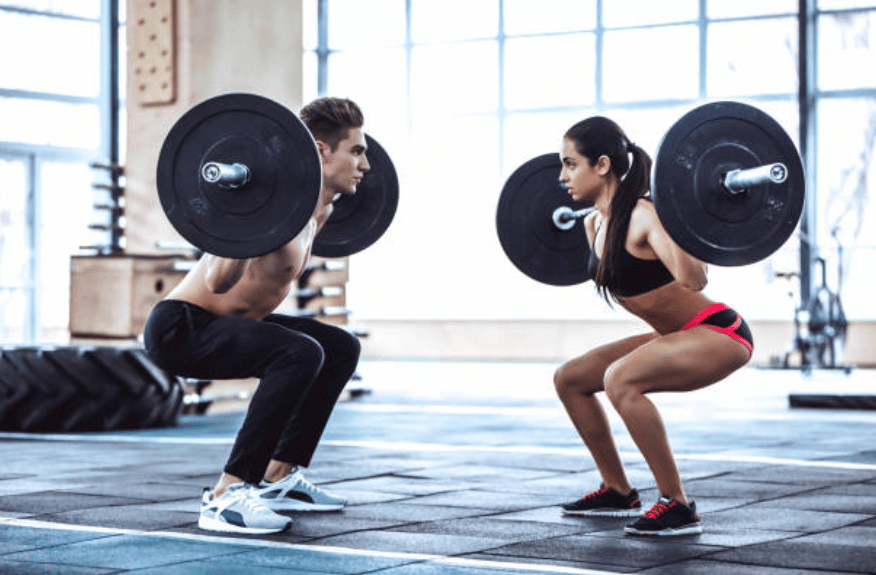
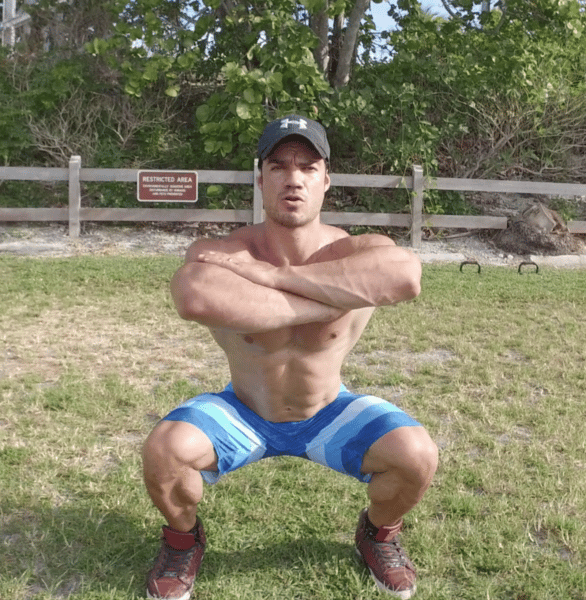
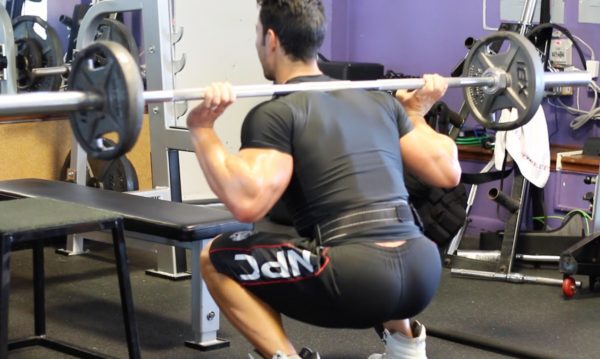
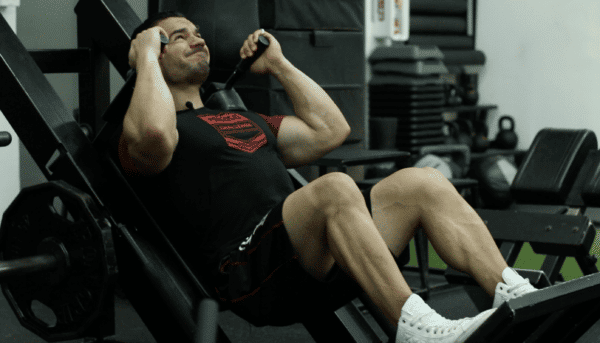
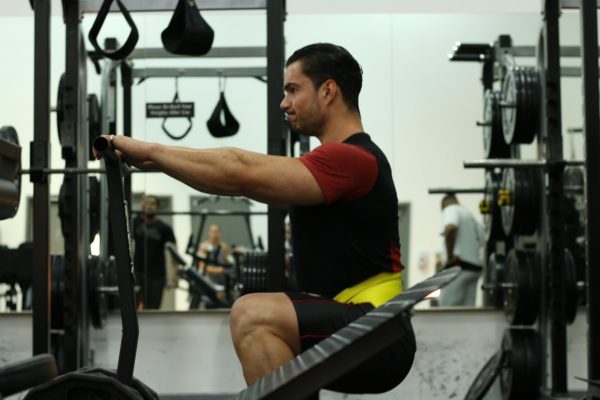







5 Comments
julien can women do this kind of exercise? i mean the belt squat?
when you have a weak knee because of a cruciate ligament operation, is the squat not recommended according to you?
thank you for your answer
I do barbell squats with the smith machine in my gym, guaranteed soreness too
There is really no exercise for me that replaces the squat in terms of feel
This is my opinion
Hi julien it seems to me that gundill made a video on this machine, in any case what is on it is that in my room it is not there